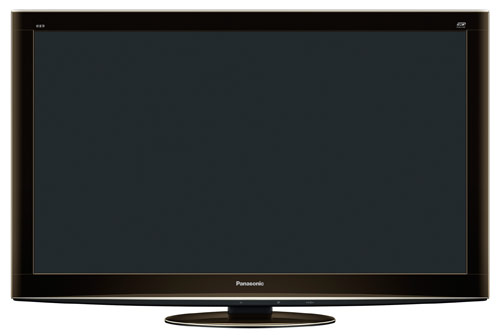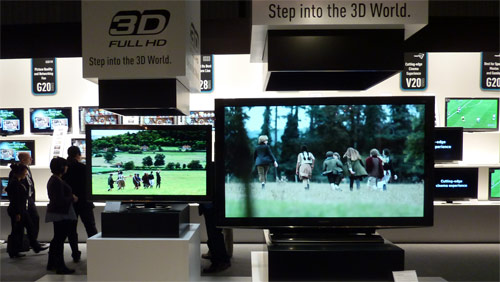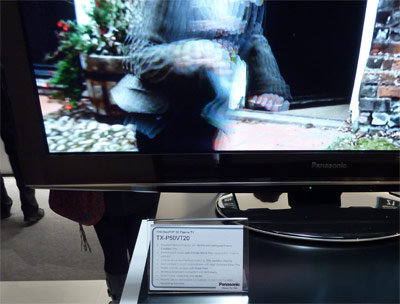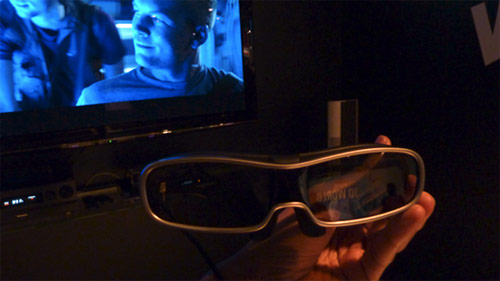
Hot on the heels of the Viera G20 NeoPDP plasma we reviewed recently, Panasonic will soon be releasing their flagship VT20 series — comprising the 50-inch Panasonic TX-P50VT20 and the gargantuan 65-inch Panasonic TX-P65VT20 — in the United Kingdom.
Update 21 May 2010: We have completed and published a full review of the Panasonic TX-P50VT20.
Note: Different countries may have different alphabets appended to the end of the model name. For example, the Panasonic TX-P50VT20B denotes the British 3-pin-plug version, while the European variant would be the Panasonic TX-P50VT20E.
The Panasonic VT20 series of plasma HDTV will be blessed with the following features:
- A true HD native screen resolution of 1920 x 1080;
- NeoPDP plasma technology;
- A Freeview HD DVB-T2 tuner;
- A Freesat HD DVB-S tuner;
- THX certification with ISFccc;
- 600Hz Sub-field Drive Intelligent Frame Creation Pro; and
- Two USB ports which allow you to playback music, pictures and video files, connect wirelessly via a wifi dongle (not included), or record HD or SD TV content to an external hard drive like a PVR. Unfortunately the recorded programmes are encrypted and cannot be viewed on other televisions or computers.
However, the single attribute that distinguishes the Panasonic VT20 series from step-down models is its full HD 3D TV capabilities. The Panasonic VT20 3D TV uses the alternate-frame sequencing method where discrete full HD images (1920 x 1080 pixels) are displayed alternately for the left and right eyes. With the help of 3D eyewear (active shutter glasses) which opens and closes its left and right shutters in sync with the delivered images, these separate images are processed by your brain and then perceived as 3D picture.
Facing stiff competition from other TV manufacturers who are also launching their respective ranges of 3D TV this year, Panasonic claim that their NeoPDP plasma panels will create the clearest and sharpest 3D images due to the NeoPDP’s quick response time (which reduces crosstalk) and faster light emission (which reduces afterglow) stemming from new technological breakthroughs in phosphor composition and light-emitting control.
Of course, for those who don’t really care much about 3D, what’s really exciting about the Panasonic VT20 series of plasma television is the potential reincarnation of Kuro technology (in particular its legendary black-level reproduction) as a result of a panel sharing agreement between Panasonic and Pioneer. While we did not witness any Kuro magic on the mid-range G20 we tested, hopefully Panasonic will not hold things back on VT20.
Panasonic TX-P50VT20
Our first encounter with the Panasonic TX-P50VT20 (as well as the Panasonic TX-P65VT20) was at the Panasonic Convention 2010 in Munich.
 |
| Left: Panasonic TX-P50VT20; Right: Panasonic TX-P65VT20 |
We were mightily impressed with the blacks on the Panasonic TX-P50VT20 3D TV, but because the showroom was pretty bright, we shall reserve judgement until we are able to run our tests in a dimly-lit viewing environment when we get our hands on a review sample.
 |
 |
| Front view and side connections | |
The metallic brown finish on the bezel was pretty inconspicuous most of the time, only exhibiting a bronze undertone when examined under bright lighting.
 |
| Rear connections and recessed grip handle |
A quick inspection around the back revealed a few cooling fans, and a pair of recessed grip handles near the bottom of the panel that will help immensely in handling/ lifting the 3D plasma TV.
The Panasonic TX-P50VT20B can now be bought from Comet at a price of £2184.99 (using voucher code AW5199 which gives 5% discount). Included in the price are two pairs of Panasonic TY-EW3D10 (TY-EW3D10B in the UK) 3D glasses which felt somewhat flimsy, but nevertheless was quite effective in terms of functionality and aesthetics when we tried them on at the Panasonic Convention in Munich.


Thanks for this review. I’m interested in this tv, but is it still worth the money if you would not care about (or leave out) the 3D feature?
BTW strange that Panasonic re-introduced the bevels in their flagship tv’s. Do you know why they stopped the bevel-less design?
I’m interested in this model not so much for the 3D aspect, but because it’s supposed to have some Pioneer tech inside which means it should be free of a few shortcomings of the G20 model that Vincent reviewed.
Yeah that Pioneer part sounds interesting as well. I hope we’ll get some information on that.
If your not worried about the 3D then go for the V series, has the same deep black filter (Pioneer technology).
cant understand why its shipped with hdmi v 1.3. Other manufacturers of the new sets are using latest version 1.4
Hey thanks for the heads up on the voucher code. I am really interested in both this model and the TX-P65VT20 particularly for there 3D capability. I am looking to purchase a 3D capable TV in the next coming months and was wondering if you have any idea when you’ll be doing a full review of these models?? Also any plans to do a comparative review of all brands 3D sets?
I saw this demoed Friday at Comets in Greenwich. It was the only 3DTV with working glasses the other being a Samsung (I think. Or was it LG?) which a customer had already broken one pair of glasses by sitting on and another pair that did not work at all for some reason. Nice going there. Great way to promote 3D ;)
Anyhow the Panasonic VT20 looked absolutely gob smackingly gorgeous and a quick demo of the 3D shutter glasses revealed it to be quite…erm…good. Well the demo 3D BluRay material truly sucked since it was pretty much all fake 3D (Like the popup cardboard type fake where they did not film in true stereoscope).
They did however have Monsters vs Aliens BluRay 3D to hand so I asked them to pop that in instead. Now here it really shines. The 3D was immersive and smooth. The only problem was a slight drop in brightness and colour saturation but nothing too harsh. I did not suffer any problems with motion blurring, flicker nor any other oddities other than those two already mentioned. Impressive.
Whilst now a gimmick it may come into it’s own with more content being made available. However the cost of replcing broken glasses is going to put off a lot of potential buyers. Especially those with families.
I read that another TV manu is making a much more pocket friendly passive system using standard polarised glasses which are much cheaper (Like a £ a pop cheap). How it will compare image wise is of course another matter.
The cost really needs to come down in order for these to take off and I do feel that the companies are rubbing their hands together in anticipation of making extra ongoing sales of shutter glasses. Especially since I have read of systems that CAN be viewed without glasses even within a certain viewing angle so several people can view it at the same time (The usual excuse being that only one person can view it at one angle).
panasonic does not own or use any patented technology from the pioneer kuro plasma panels, some of the tech engineers from pioneer now work for panasonic but the V series does not have ANY pioneer technology.
the VT20 employs an infinite black pro filter which is excellent but the black levels are still not as deep as the kuro’s. however i would rate overall picture quality better than the kuro, motion and depth (colour saturation/contrast) are better. less picture noise and more natural presentation. 3D is a bonus and a future proof.
if you dont want 3D think about the G20 range, excellent panel and in any case kuro’s are history.